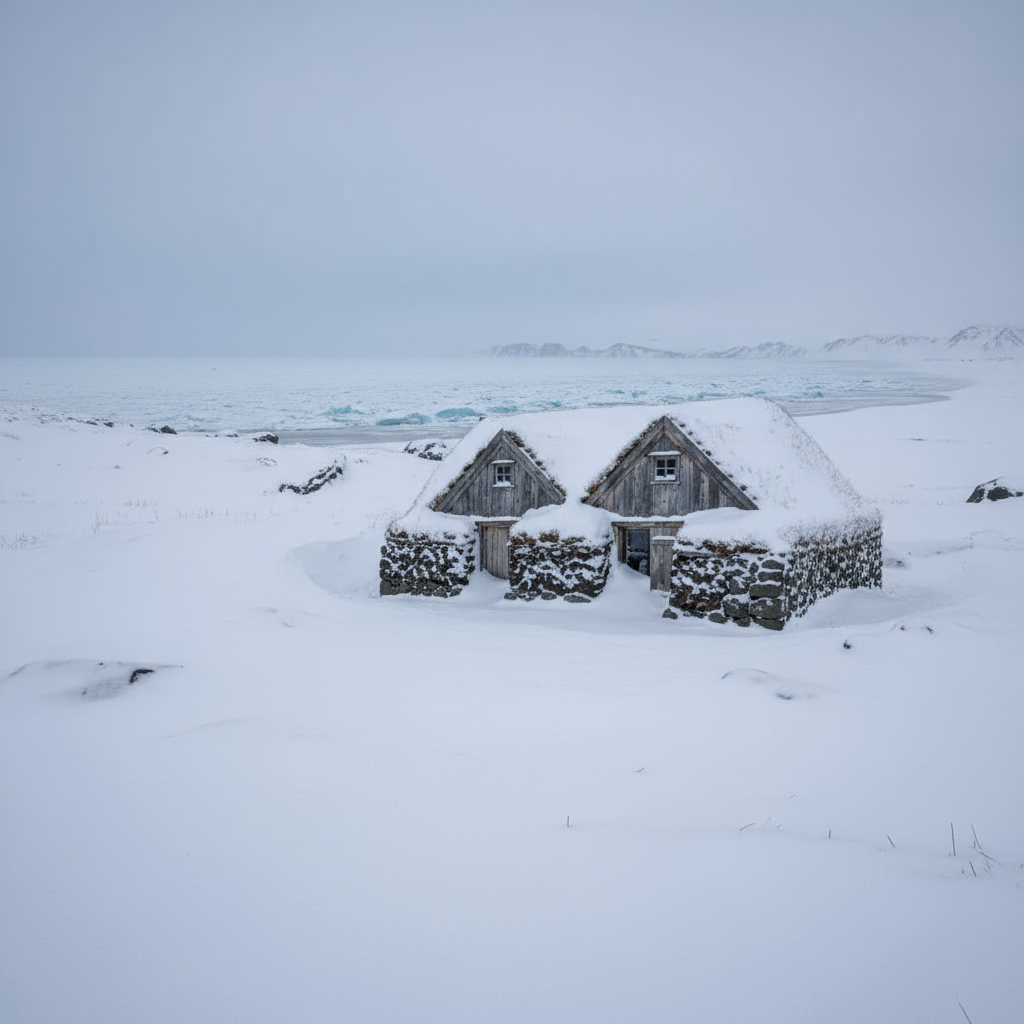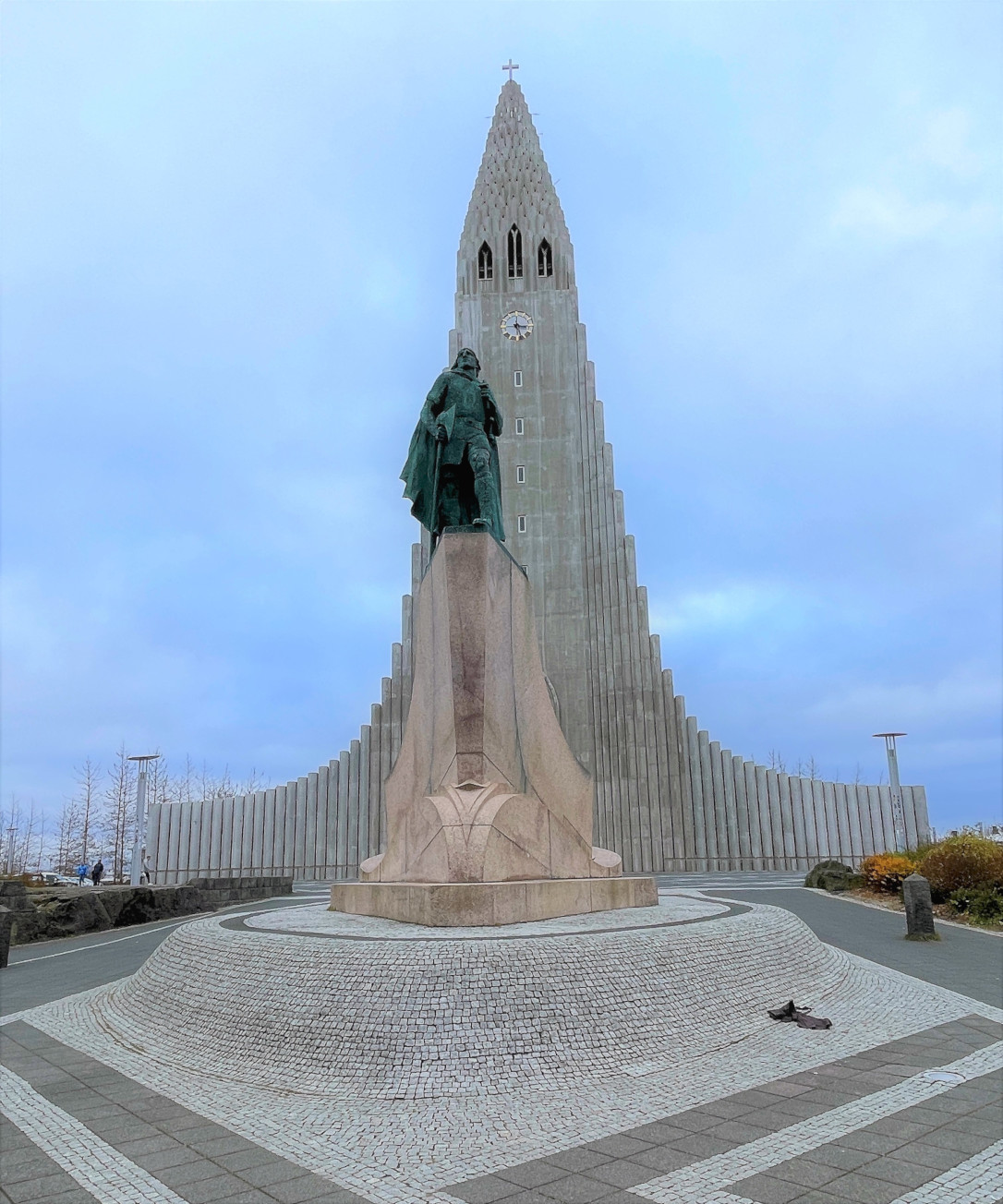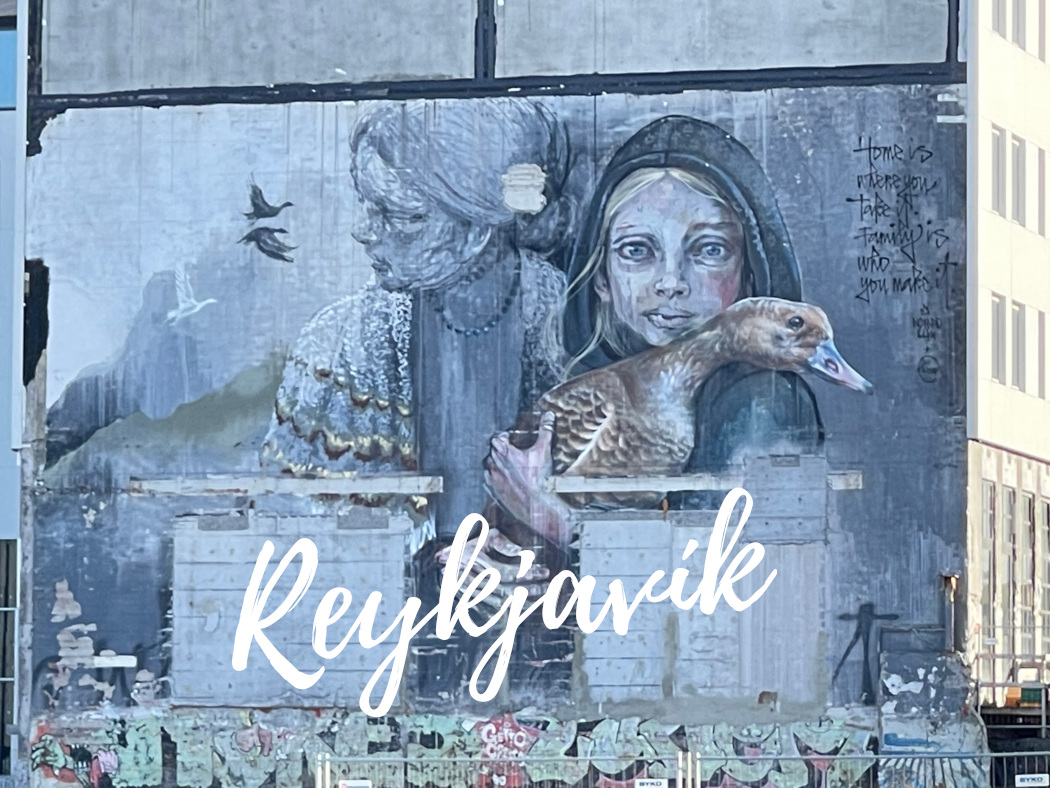 |
| The fishing trawler, Jón Forseti, in Reykjavík harbor sometime between 1908 and 1920. Courtesy of Ljósmyndasafn Reykjavíkur |
This blog post is an excerpt from a book I’m currently working on. The stories in this blog are tied to the history behind the association that started this special day of honoring mothers. There are many events tied to this event and I wanted to share a couple of them with you here.
Fishing was for a long time Iceland’s primary income and many of the country’s boys and men sailed the waters in all types of weather to bring back Iceland’s most valuable asset, fish. Being a fisherman was hard work and many fathers and sons became victims of the stormy weather and raging ocean.
On the night of February 7th, 1925, the weather was terribly stormy with heavy snowstorm and sleet. This storm covered all of the western part of the country and caused much damage to anything in its way such as ship at the harbors, homes, phone lines and even death of men, women and children.
The motor ship, Sólveig, went under in Sandgerði with all its six men. Out on Halamið, a fishing area out by vestfirðir (west fjords), several fish trawlers and ships covered the area with fishermen hard at work. When the weather hit them on Saturday, most of the boats were able to stay afloat and eventually make it back to the harbor.
In fact, they all made it except the two trawlers, Leifur Heppni (Leifur the Lucky) and Field Marshal Robertson. They were hit so hard in the storm that there was no hope of recovery. The men struggled to stay alive, hoping they could hold on until help arrived. The weather did not let up for another 36 hours.
It wasn’t until February 14th, 1925, that15 trawlers and the coast guard were sent out to search an area of 60.000 square miles (metric), but to no avail. None of the lost sailors were retrieved. Combined, there were 69 casualties: 63 Icelanders and six Englishmen.
Up until this, it was believed that the weather couldn’t harm the ships on the open sea. Combined, the lost fishermen left behind 31 children from Leifur Heppni and 38 children from F.M. Robertson.
 |
| Leifur Heppni (Lucky Leifur). Photo: Unknown. |
 |
| The fish trawler Field Marshal Robertson. Source |
A memorial was held in Reykjavík on March 23, 1925. All labor and traffic on land and at sea was ordered to stop at 2.00 p.m. and everyone was to be in complete silence for five minutes. No meetings were to take place at the Althing. Both Reykjavik’s Cathedral and the Free Church had scheduled memorial services at 3.00 p.m.
After the devastation, many claimed to see the dead sailors during church meetings. The medium, Ísleifur Jónsson (mentioned in my blog here, here and here), didn’t find it odd at all that individuals sensitive to otherworldly things saw the dead sailors at church services.
Even with this mindset, on two occasions, Ísleifur was caught by surprise when he saw the sailors coming. It wasn’t so much the fact they came, but it was the way they appeared.
One of the occasions was during Mrs. Guðrún Sveinsdóttir’s (1901-1925) funeral. As soon as the congregation had taken their seats, the priest, Rev. Ólafur Ólafsson started praying for the lost sailors who had died in the horrific storm.
This didn’t surprise Ísleifur as it fit in with his idea of how the dead seek the presence of those who contact them. Just like Ísleifur had contemplated, they seemed to know, as if they received a message beforehand to be there.
The dead sailors appeared in the exact same moment as when the Reverend mentioned them. Ísleifur felt the quick response between their arrival and the Reverend’s mention of the tragedy, had to do with their advanced way of communicating.
 |
| Reykjavik Cathedral. Left: Taken in 2014 by Christophe Pinard. Right: Taken ca. 1902. Source |
 |
| Reykjavik Cathedral in 1900. Source |
 |
| Reykjavik Cathedral. |
The other experience was when Rev. Haraldur Níelsson (mentioned in my blog here, here and here) held a sermon on the Sunday before the sailor’s memorial. Ísleifur was sitting in the middle of the chapel at the end of the bench.
The Reverend was far into his sermon when all of a sudden Ísleifur saw a bunch of sailors slowly and calmly walking in rows on to the church floor. He recognized some of them as his friends who had drowned. The sailors walked towards the choir and mingled in with them.
Ísleifur thought this was very strange and wondered why they were there. Right at the same time as he had the thought, the Reverend started talking about the tragedy the sailors suffered and started praying for those who had been called into another world.
The spiritist society in Iceland, Sálarrannsóknarfélagið (The Icelandic Society for Psychical Research), has helped many clairvoyant individuals figure out how to channel their communication with the other worlds and find a way to live with this ability in peace.
Andrés Böðvarsson (1896-1931) was one such clairvoyant. From childhood and into adulthood he was so troubled by his experiences. What made it even worse was that most people considered him strange and crazy.
This crazy-label from his peers stemmed from his unfortunate circumstances of falling into a trance at random moments. He had no control over when or where they would occur. Neither was there ever a warning before he entered into a trance. He would find himself waking up from trance feeling very disoriented with no memory of what happened. Those around him didn’t know about his trance states.
All they knew was that all of a sudden his presence changed in so much that they would often find his demeanor rude or offensive.
Trying to cope with the two worlds at the same time was overbearing for Andrés and he suffered much pain and agony over this. Through some planned events, he was fortunate enough to meet the spiritist Einar H. Kvaran and finally then, Andrés started understanding what had been happening to him all these years. He now knew how to welcome it into his life without suffering emotionally.
Andrés lived on Sólvallagata 3 and so did Einar H. Kvaran. On February 20th, 1928, Andrés was visiting Einar in his apartment. During his visit he entered a half-trance. He started mumbling semi morose asking why they were there and what they wanted.
Einar asked him what he was experiencing. Andrés answered that he saw a fish trawler that was stranded on a reef near land. He saw the water breaking over the boat and the men onboard fell into the ocean. He saw bodies of these men floating around the ship and people coming from land to help save the sailors. Some of the men were saved.
The vision was so horrifying to Andrés that he became overwhelmed with emotions. Einar wanted to know what ship he saw, but before he could answer, he snapped out of the trance and couldn’t remember what had happened.
Einar and his other guests didn’t think anything of the vision Andrés had while in half-trance. They figured it was probably a memory from the time Andrés was a sailor or an incident he had read about.
| Sólvallagata 3, the home of both Einar H. Kvaran and Andrés Böðvarsson. |
About a week after Andrés was in half-trance in Einar´s apartment, the fish trawler, Jón forseti, was shipwrecked. In this horrific accident, 15 men drown and 10 were saved. When Einar and his guests who were present during the trance, read about the accident in the paper, they realized that everything, to the smallest detail, was the same as Andrés had described that day.
At a later time during another trance with Andrés, the sitters asked his otherworldly contacts of how he could see an event that hadn’t happened yet. The otherworldly contacts explained that there are those who can see events before they occur, but they didn’t know how or why that was.
There were those (on the other side) who were responsible for the ship’s fate, so some kind of radio signal was sent to the world on the other side to let them know it was time to get ready to receive the men who would die in this accident. Somehow, Andrés was able to intercept this radio broadcast.
The medium, Ísleifur Jónsson, was on his way to church to attend the funeral of the 15 sailors, of whom he knew a few. He was concerned the church would be completely full and worried about finding an empty seat. When he got the church, it was already packed, just like he feared.
Desperately wanting to go in, he found the overseer and asked him for help. The overseer was able to get him inside the church without any issues. Once inside, Ísleifur saw the drowned sailors gathered together, but felt someone was missing. As he looked closer, he couldn’t see his friend, Stefán Einarsson (chef on board the trawler) and his son, Árni Kr. Stefánsson (chef’s assistant) who were among the drowned sailors.
He looked over to where the coffins were placed and noticed two coffins were missing and figured it had to be their coffins. Soon after, two coffins were brought inside and in that same instance the two men appeared.
The service began and Ísleifur thought he could see each drowned sailor standing close to his coffin where the body rested. To Ísleifur’s surprise, their faces looked confused and worrisome. He also noticed many white clad beings that seemed to radiate wonderful energy.
Above the coffins were many smaller beings forming a roof over them. Larger and clearer beings formed groups next to the sailors. Each group formed a half-circle behind each sailor, as if protecting them from the overcrowded church.
The opening hymn ended and the sermon began. Ísleifur noticed the sailors had become unsettled and nervous. Images from the tragedy swerved above the choir where the sailors were and this seemed to make them anxious. Ísleifur felt their fear and uneasiness increasing.
The beings protecting the sailors seemed to be doing all they could to shield the sailors from these images, but they didn’t quite have a handle on it. The sailors were about to lose control. The terror in their faces was immense and Ísleifur started to feel ill and regretted attending the funerals.
The coffins were so many. They had been laid out in rows of three with five coffins in each row. They were placed between the pews and the choir near the podium. All of a sudden Ísleifur saw a man appear next to the middle row of coffins. He was tall, tanned face with a full beard and standing in the exact spot the priest was standing.
Although his face looked dark it was as if it radiated peace. The man wore a cloak with a color impossible to describe, kind of like a mix of red and blue with golden rays radiating from it. It was impossible to tell whether the beams came from the colors or if it was some kind of energy exuding from the cloak itself. It was energy filled with solace and joy and Ísleifur felt nothing could be more wonderful than what he was experiencing at that very moment. He was certain it had to be Christ.
In that same moment he saw the sailors gathering and bowing down in front of the man. The man lifted his arms above the sailors in the same manner a priest does when blessing his congregation, except his arms were more straight with palms facing down.
The beings that formed the half-circles had now rearranged themselves in one big half-circle forming a wall behind the sailors so the congregation could only get to them and not to the sailors. When the sailors looked up at the bearded man all their angst went away and their faces became calm.
The man Ísleifur thought to be Christ stepped down and stood among the sailors and spoke to them. In that same moment the priest’s sermon ended and so did his vision.
 |
| Inside the Free Church. Source |
 |
| Fríkirkjan (The Free Church). Left: Photo taken by Berit Wallenberg in the 1930’s by courtesy of Swedish National Heritage Board. Right: Photo taken in 2019. |
After the country’s many devastating losses of its men, the fish trawler Jón Forseti incident became a historical turning point for women in Iceland. At this point, the western part of the country had lost many husbands and fathers to the ocean.
This was hurting several families who had lost their main (often only) source of income, forcing already poor families deeper into poverty. It was time to do something to support the families of the lost sailors.
On April 20th, 1928, Mæðrastyrksnefnd Reykjavíkur (the Reykjavik Maternity Committee) was established to help the widows and fatherless children with their basic needs.
Some 22 women, representatives from 10 different women’s associations gathered for a meeting at Kirkjutorg 4. Laufey Valdimarsdóttir (1890-1945) became its first chairman. She was the first Icelandic woman to graduate from Menntaskólinn í Reykjavík (Reykjavík Junior College).
 |
| Kirkjutorg 4 where the women met to organize themselves. Currently the location of Kvosin Hotel. |
 |
| Laufey Valdimarsdóttir. Source |
By the spring of 1928, the committee moved into an office in the theosophical society‘s building. It was this committee that brought Mother’s Day to Iceland. They very first Mother’s Day in the country was in May, 1934.
Today, every year around Mother’s Day, a Mother’s Day a charity takes place where all the money goes towards education for low income women. This charity has managed to give more than 100 mothers the opportunity to start their academic studies.
For this year’s charity, they are selling hidden message candle, created by Þórunn Árnadóttir. When the candle is burned, hidden messages appear inside the candle.
 |
| The Mother’s Day candle. Light it and hidden messages to your mother will appear. |
One of the association’s hard working women was Auður Auðuns (1911-1999). She was their attorney from 1940 to 1960. Her brother was the spiritist and Reverend, Jón Auðuns.
In 1935, Auður became the first woman to receive a law degree in Iceland and the first woman to become Mayor of Reykjavík and a minister of Iceland. She was a member of the Althing from 1959-1974 and in 1967, she sat on the United Nations General Assembly. Her list of accomplishments goes on beyond what’s mentioned here.
 |
| Auður Auðuns. Source |
The committee was quite organized in their tasks. Every Wednesday, they donated clothing and on Tuesdays they handed out various necessity items. Some of the financial aid they were able to help out with went towards the confirmation of the youth, summer camp for kids and classes in employment skills. Every newborn baby received a gift containing clothing and other much needed items. Every Christmas they did a special distribution where other groups, such as the Red Cross joined in.
Sources:



